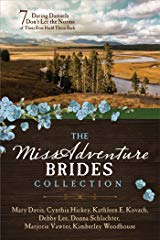As water reflects the face, so the heart reflects one person to another.
Proverbs 27:19 CEB
It seems strange to blog about The Case for Christ. Not only is it autobiographical—the original book penned by Lee Strobel—but I know his daughter, Alison, from my writing circle of friends. So, I’m about to pick apart a character who is very real (in the physical sense, not from Kathy-land,) and I know one of the players personally. Weird.
But, here goes. . .
There are several types of characters in a story. The Protagonist, the Antagonist, the Mentor, etc. I’d like to address the Mirror. This is the character who becomes the reflection for the protagonist, and helps them become who they were meant to be in the first place, thus helping them complete their arc.
It wasn’t until I saw The Case for Christ that I realized there are two functions of the Mirror.
#1 One is to show to the protagonist a positive part of himself that he didn’t realize was there, bringing out the best of his personality.
A good example of this is Megamind. The blue alien, Megamind, is falsely taught that to be bad is good, (see my post on Megamind, “How to Find a Supervillain’s Essence.”) He tries very hard to prove himself a supervillain to the citizens of Metro City. But deep down, he really is a nice guy. His love for the reporter, Roxanne, is the catalyst to him finding his true self. But first, he must take on a less antagonistic body form. So, he creates a formula for shape-shifting and becomes the mild-mannered, and yawningly uninteresting, Bernard, Roxanne’s coworker. While thinking she’s talking to Bernard on a date, she sees the real Megamind. She hears his heart and falls in love. Through Roxanne, Megamind finds his true self, his true-blue essence, and becomes better for it.
#2 The other role of the Mirror is to reflect the negative aspects of the protagonist’s personality. To do this, it’s helpful if the protagonist is an anti-hero. Think of the acerbic Charlie Alnutt in The African Queen, (or really, any Humphrey Bogart movie.)
In The Case for Christ, Lee Strobel is an anti-hero. He comes off as an arrogant journalist who feels he knows, beyond a shadow of a doubt, that there is no God. He teaches his daughter this, and he lives it with every fiber of his being. His wife, Leslie, had also started out this way, but through an event that nearly costs her daughter her life, Leslie begins to change her mind after witnessing a miracle. The family is in a restaurant where Alison nearly chokes on a gumball. A nurse, Alfie, is there and saves the little girl. Alfie is a Christian and refuses the parents’ thanks, claiming that Jesus is the one who saved their child. Alfie and her husband were going to a different restaurant that night, but she had a strong feeling they should go to this one.
Leslie begins to turn her back on the atheist platform on which she and Lee had built their lives, and she seeks out Alfie to learn more of this Jesus who saved her daughter.
Lee becomes more and more belligerent against the thought of a God of the universe. He emerges into the anti-hero as his refusal to listen to Leslie begins to rule his life. His marriage becomes strained. The more he converses with his wife, the more he sees the ugliness of his convictions, even though he’s not ready to admit it. The Mirror is doing her job by calling out the parts of Lee that God did not create.
Leslie begins to pray, “Take his heart of stone and give him a heart of flesh.” She prays this daily throughout the duration his journey.
Lee's Identity is hard-nosed journalist. Lee's Essence is what God had put in Him from the time he was knit in his mother's womb—lover of truth.
Lee's Identity is hard-nosed journalist. Lee's Essence is what God had put in Him from the time he was knit in his mother's womb—lover of truth.
Lee decides to settle the debate once and for all, and puts his journalistic tools to work to prove there couldn’t possibly be a God. The more research he does, the closer to the truth he comes. And, of course, God proves Himself worthy while on trial, and Lee must concede that Leslie and Alfie, and other believers he has encountered, are right. There is a God.
Had Leslie not challenged him to look within his depths to see the unyielding, arrogant man he was, Lee would have never embarked on the journey to dispel Christianity. And as a result, he never would have traded his heart of stone for a heart of flesh and come to know Christ as his personal Savior.
Do you know and love someone with a heart of stone? Be the Mirror to help them see what is really going on with them. Remember, a reflector doesn’t beat the reflectee over the head. It gently allows them to see what they already know about themselves.



















